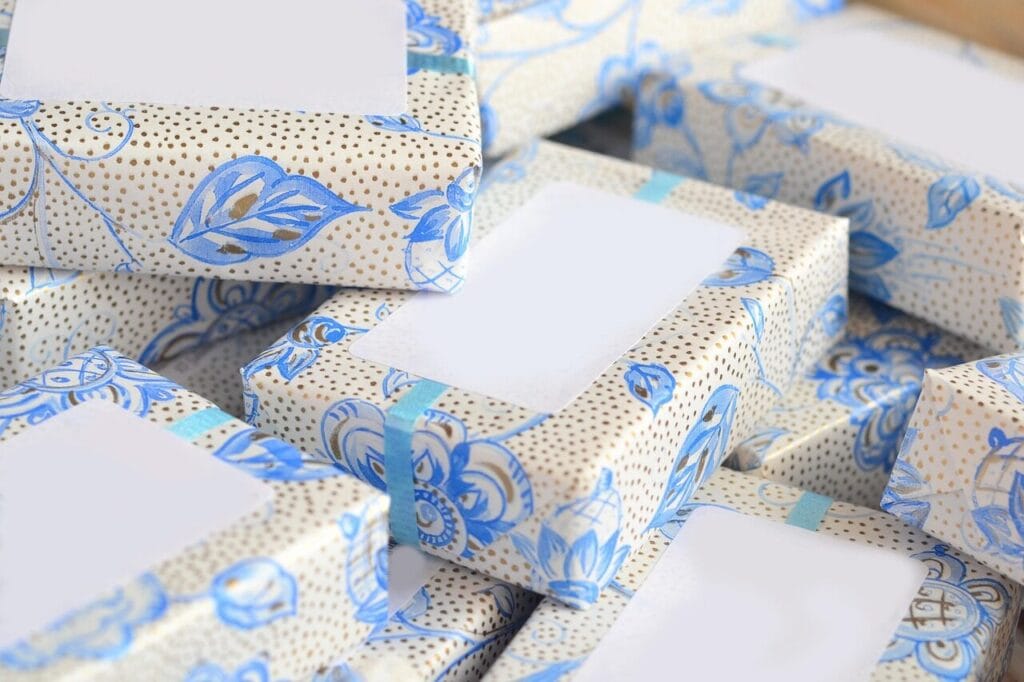Блистерная упаковка в кондитерском производстве: Техническое погружение в материалы, процессы и контроль качества
Введение
Блистерная упаковка широко распространена в потребительских товарах, фармацевтике и дорогостоящих продуктах питания - особенно в конфетах и кондитерских изделиях, требующих прозрачной или защитной упаковки. При производстве конфет блистерная упаковка часто используется для индивидуально запечатанных единиц (например, шоколадных конфет, жевательных резинок, таблеток, мятных конфет) или сложных мультипакетов (например, сезонных ассортиментов). Технология производства блистерной упаковки гораздо сложнее, чем кажется на первый взгляд: она требует знания материалов, физики процесса и обеспечения качества.
В этой статье представлен экспертный, инженерно-ориентированный анализ:
Фундаментальная механика образования волдырей
Материаловедение, лежащее в основе формирования пленок и подложек для укладки
Производственные процессы (термоформовка и холодная формовка)
Надежный контроль качества и устранение дефектов
Новые тенденции и инновации в блистерной упаковке
Давайте разберемся, что к чему.
Фундаментальная механика образования волдырей
Для проектирования, оптимизации и устранения неисправностей блистерных операций необходимо выйти за рамки концепции "заполнить и запечатать" и понять физику деформации материала, динамику давления и распределение деформации.
Пластическая деформация и термическое размягчение
Блистерная полость создается путем постоянного изменения формы пленки из плоской в трехмерную. Для этого требуется пластическая (необратимая) деформация.
На сайте термоформованиеПолимерная пленка нагревается (часто до температуры, близкой к температуре стеклования или чуть выше), TgT_gTg), что снижает предел текучести и позволяет молекулярным цепочкам двигаться свободнее. Пленка становится податливой и может быть затянута в полость формы под давлением или вакуумом.
Если пленка нагревается слишком сильно (выше температуры плавления или слишком сильно размягчается), она теряет механическую целостность, провисает или чрезмерно растягивается (истончается).
На сайте холодная штамповка (используется для ламинатов алюминий/фольга), нагрев не применяется. Вместо этого механический штамп или вилка растягивает материал, используя пластичность фольгированного сердечника (например, алюминиевого). Пластическая деформация происходит за счет механического вытягивания, а не термического размягчения.

Дифференциал давления и плунжерный помощник
Движущей силой образования полостей является перепад давления:
Для удаления воздуха под пленкой (через отверстия или пресс-форму) создается вакуум.
Тем временем давление окружающего (или сжатого) воздуха над пленкой толкает ее вниз в форму.
Во многих глубоких или запутанных полостях помощь при подключении используется: механическая или нагретая пробка касается пленки и проталкивает или предварительно растягивает ее в полости перед вакуумным втягиванием. Это помогает более равномерно распределить деформации и уменьшить локальные утонения (особенно в углах или на дне карманов).
Угловое утонение это очень распространенный дефект блистеров с глубокой вытяжкой. Поскольку пленка сильнее растягивается вблизи острых углов или краев, ее толщина уменьшается и может стать слабой или даже треснуть. Правильная конструкция вспомогательного устройства плунжера, геометрия формы (углы осадки, радиусы галтелей) и контроль скорости формования являются ключевыми факторами для уменьшения этого дефекта.
Материаловедение формовочных пленок и подложек для укладки
Выбор правильных материалов - это, пожалуй, самое важное решение при изготовлении блистерной упаковки. Формирование и укупорка материалы должны соответствовать барьерным характеристикаммеханические свойства, герметичность, стоимость и технологичность - особенно в условиях высокоскоростной конфетной линии.

Основные свойства материала
При оценке материалов эти показатели являются наиболее важными:
Коэффициент пропускания водяных паров (WVTR): Сколько влаги проходит через пленку (г/м²/день). Незаменима для защиты чувствительных к влаге конфет (например, гигроскопичных порошков, кристаллов сахара).
Скорость передачи кислорода (OTR): Скорость проникновения кислорода. Критически важен для предотвращения окисления ароматизаторов, жиров и других чувствительных к кислороду ингредиентов.
Пропускание света / защита от ультрафиолета: Многие конфеты, покрытия или ингредиенты чувствительны к свету (шоколад, красители). Соответственно, можно выбрать прозрачные, УФ-фильтрующие или непрозрачные материалы.
Формуемость / растяжимость: Пленка должна выдерживать деформации при формовании, не разрываясь, не трескаясь, не истончаясь слишком сильно и не вызывая остаточных напряжений.
Четкость и качество оптики: Для потребительской привлекательности и проверки может быть важна прозрачность или блеск.
Герметичность / совместимость с термопечатями: Формовочная пленка должна надежно приклеиваться к выбранной подложке под крышку при термических условиях или давлении, подходящих для вашей линии (и часто с сохранением отслаиваемости, если это необходимо для удобства потребителя).
Стабильность затрат и поставок: Стоимость материалов должна быть сбалансирована с производительностью, а надежность цепочки поставок важна при упаковке кондитерских изделий в больших объемах.
Распространенные варианты формовочной пленки (с указанием компромиссов)
Ниже приведено сравнение часто используемых пленок для формирования блистеров (применительно к упаковке конфет/пищевых продуктов).
| Материал | Барьер (WVTR / OTR) | Формуемость / растяжимость | Ясность | Относительная стоимость | Часто используется в конфетах и продуктах питания |
|---|---|---|---|---|---|
| ПВХ (монопленка) | От плохого до низкого | Превосходно (термоформуется) | Превосходно | Низкий | Базовые упаковки для конфет, стабильные продукты для окружающей среды |
| ПВХ / PVDC ламинат | От умеренного до хорошего (в зависимости от толщины PVDC) | Хорошо | Хорошо | Средний | Конфеты с умеренной чувствительностью к влаге или кислороду, где требуется прозрачность |
| ПЭТ / ПЭТГ | Умеренный | Хорошо (меньше растягивается, чем ПВХ) | Превосходно | Средний | Лотки для конфет, блистеры для продуктов премиум-класса, структурные компоненты |
| Aclar® (PCTFE) | Превосходно (очень низкий уровень WVTR) | Хорошо | Очень хорошо | Высокий | Высокочувствительные к влаге конфеты или фармацевтические препараты, кондитерские изделия премиум-класса |
| Фольга холодной формы (ламинат, например, OPA/Alu/PVC) | Абсолютный барьер | Хорошо тянется фольга | Непрозрачный | Выше | Сверхчувствительные продукты, длительный срок хранения, проталкиваемые упаковки из фольги |
Примечание: во многих промышленных операциях используются композитные пленки (например, с несколькими слоями/покрытиями), чтобы сбалансировать соотношение барьерности, стоимости и формовочных свойств.
Материалы для укупоривания/запечатывания
Подложка под крышку герметизирует и защищает заполненную полость. Распространенные варианты включают:
Алюминиевая фольга (твердая): Жесткий, проталкиваемый (например, для таблеток / твердых конфет).
Алюминиевая фольга (мягкая): Более вязкие, отслаивающиеся уплотнения (для удобства пользователей)
Нанесение покрытия с термозапайкой (HSC): Лаковое или полимерное покрытие на фольге (или иногда на полимерном покрытии), которое вступает в реакцию (плавится или соединяется) под воздействием тепла/давления с формующей пленкой. Совместимость ВСК с формирующейся пленкой имеет большое значение.
Ламинаты из бумаги/картона: Более низкая стоимость, иногда используется, когда абсолютный барьер не требуется. Они имеют покрытие для герметизации, могут включать в себя слои, препятствующие проникновению влаги и кислорода.
Пластиковые пленки (например, ориентированные ПП, ПЭТ) в качестве лиддеров: В блистерных упаковках, ориентированных на потребителя или продукты питания (не фармацевтические), вместо фольги могут использоваться прозрачные или печатные пластиковые пленки, если барьерные условия приемлемы.
Интерфейс запечатывания, образующий соединение пленки с ВСК/фольгой, должен быть прочным (без протечек), но при этом может требовать отслаивания (если потребителю необходимо извлечь содержимое). Дизайн рисунка уплотнения (полное ламинирование, частичное уплотнение, пароотводы) должен соответствовать продукту и условиям использования.
Производственные процессы: Термоформование и холодная формовка
Производство блистеров в целом делится на два класса процессов: термоформование (на основе полимерных пленок) и холодная штамповка (тиснение фольгой/ламинатом). Каждый из них имеет свое оборудование, оснастку, операционные ограничения и идеальные области применения - особенно актуально для производства конфет, где производительность, целостность упаковки и стоимость имеют решающее значение.
Процесс термоформования (пленки на основе полимеров)
Этот метод является основным для многих блистерных упаковок, используемых для конфет, нутрицевтиков или продуктов питания. Этапы обычно включают:
Размотка и обработка полотна
Формовочная пленка разматывается с рулона под натяжением и подается на нагревательную станцию.Отопление / кондиционирование
Пленка проходит через лучистые нагреватели, инфракрасные, горячие плиты или контактные нагреватели. Цель - довести пленку до заданной температуры формования - достаточно мягкой, чтобы растянуться, но не настолько горячей, чтобы потерять структуру.Станция формовки/формовки
Пленка подается на станцию формования, где вакуум (а иногда и положительное давление воздуха) втягивает ее в охлаждаемую полость формы. Предварительное растяжение может быть обеспечено с помощью плунжера.Наполнение / загрузка продуктов
Сразу после формирования полости заполняются конфета или изделие. Это должно происходить надежно, пока пленка не остыла слишком сильно или не сморщилась.Укупорка / герметизация
Материал крышки (фольга или пленка) выравнивается, часто предварительно нагревается или кондиционируется, а затем прессуется под воздействием тепла/давления для активации термозапечатывающего покрытия и формирования герметичного уплотнения.Перфорация / резка полотна
После запечатывания полотно может быть перфорировано (для легкого разрыва) и разрезано на отдельные блистерные карты или мультипакеты.Осмотр/отклонение Выброс
Проверка зрения или целостности проверяет пломбы, внешний вид или печать кода. Дефектные упаковки выбрасываются или отводятся.
Основные отличия машин:
Ротационное уплотнение (на основе цилиндра): Высокая скорость работы за счет запечатывания с помощью вращающегося барабанного штампа, идеально подходит для высокопроизводительных кондитерских линий.
Плоское запечатывание (пластинчатый пресс): Медленнее, но обеспечивает более равномерное давление и более длительное время выдержки - оптимально для деликатных или толстых участков уплотнения, а также при требовании к целостности уплотнения.
Холодная формовка / Блистеры на основе фольги
Холодное формование используется в тех случаях, когда требуется максимальная защита (например, для очень чувствительных к влаге продуктов). Процесс:
Размотка фольгированного ламината
Фольга или ламинат (например, OPA/Alu/PVC) подается без нагрева.Механизм штамповки/формовки
Механический пресс или плунжер вдавливает фольгу в полости формы. Растяжение происходит в сердцевине фольги (чаще всего алюминиевой). Внешние полимерные слои подвергаются пластической деформации.Наполнение / загрузка продуктов
Как и при термоформовании, в полости загружается конфета или изделие.Уплотнение
Материал крышки (часто фольга или пленка) выравнивается и запечатывается. Поскольку сформированная полость является несколько жесткой, запечатывание требует точного выравнивания и давления запечатывания.Резка/выброс
Упаковка обрезается или разрезается на отдельные блоки.
Холодное формование позволяет получить волдырь с практически абсолютный барьер к влаге, кислороду и свету. Однако стоимость инструмента, требования к механическому усилию и ограничения по геометрии полости (меньше возможностей для создания острых углов и мелких деталей) сдерживают его применение.
Термоформование и холодная штамповка: Компромиссы
| Характеристика | Термоформование | Холодная штамповка |
|---|---|---|
| Материалы | Термопластичные пленки (ПВХ, ламинаты PVDC, ПЭТ, Aclar) | Алюминий/фольгированный ламинат |
| Барьер | Различные (от хорошего до отличного, в зависимости от пленки) | По сути, непроницаемый |
| Формирование сложности | Может поддерживать глубокие, сложные кариозные полости | Более ограниченная геометрия, меньшая глубина, требуют тщательного проектирования |
| Инструментарий / капитальные затраты | Как правило, ниже | Сильные механические прессы с высокой потребностью |
| Пропускная способность / скорость | Часто выше | Часто медленнее из-за механических ограничений |
| Размер упаковки и отходы полотна | Более эффективное использование полотна; меньше отходов материалов | Больше "просадок" полотна и брака, более дорогие материалы |
| Применение в производстве конфет | Стандартные блистерные карты для конфет, мультипаки, видимые продукты | Сверхчувствительные ингредиенты, длительный срок хранения, высокоценные кондитерские изделия |
Контроль качества и устранение дефектов
На высокоскоростных блистерных линиях по производству конфет достижение стабильного качества очень важно. Дефекты влияют на потребительский опыт, соответствие нормативным требованиям, срок хранения и репутацию бренда. Ниже приведено практическое, ориентированное на производство руководство по обнаружению и устранению дефектов.
Основные меры по обеспечению качества
Визуальный осмотр / осмотр с помощью камеры
Используйте системы технического зрения, установленные на линии, для проверки правильности заполнения, целостности полости, внешнего вида уплотнения (равномерность шарика, отсутствие пустот), правильности маркировки или печати, смещения, расслоения или косметических дефектов.Испытание целостности уплотнений
Распад вакуума / Распад давления: Поместите запечатанную упаковку в камеру под вакуумом и следите за потерей давления (что свидетельствует о наличии утечек).
Проникновение красителя (например, ASTM F1929): Погрузите упаковки под вакуумом в цветной краситель, а затем осмотрите их на предмет попадания красителя, чтобы выявить микроутечки.
Испытание на сжатие воздуха или разрыв: Впустите воздух и измерьте реакцию давления, чтобы найти слабые уплотнения.
Отбор проб / разрушающий контроль
Периодические разрушающие испытания (например, испытания на отслаивание, прочность на разрыв, поперечный срез толщины пленки) для подтверждения предельных эксплуатационных характеристик.Мониторинг процессов и SPC
Постоянный мониторинг параметров процесса - температурных зон, уровня вакуума, давления запечатывания, скорости машины - и их статистическое отслеживание для раннего обнаружения смещений или отклонений.
Распространенные дефекты, коренные причины и корректирующие действия
Ниже приведена практическая матрица поиска и устранения неисправностей, предназначенная для блистерных линий в кондитерском производстве:
| Дефект | Визуальный / эксплуатационный симптом | Вероятные коренные причины | Рекомендуемые действия |
|---|---|---|---|
| Неполное уплотнение / протекание каналов | Фольга или крышка легко отслаиваются; попадание красителя; вакуумный тест не проходит | Слишком низкая температура уплотнения; недостаточное давление уплотнения или выдержка; загрязнение на уплотнительных поверхностях; несоосность; несовместимые ВСК | Повысьте температуру уплотнения (на небольшую величину); увеличьте давление или время выдержки; очистите уплотнительные поверхности; проверьте выравнивание и регистрацию; проверьте совместимость HSC |
| Запечатывание / склеивание разрывов / измельчение | Фольга сильно рвется при отслаивании; расслаивание при агрессивном отслаивании | Слишком высокая температура запечатывания или выдержки; избыточное давление, вызывающее чрезмерную адгезию или повреждение фольги | Уменьшите температуру или время выдержки; уменьшите давление уплотнения; проверьте вариации клея или ВСК |
| Трещины/разломы пленки в полости блистера | Трещины или проколы, часто в углах или основаниях полости | Слишком низкая температура формования (пленка слишком жесткая); слишком агрессивный плунжер; большие радиусы формы; высокая скорость формования, вызывающая концентрацию деформации | Осторожно повышайте температуру формования; уменьшите давление или глубину вдавливания плунжера; измените геометрию пресс-формы, чтобы она имела более плавные радиусы; уменьшите скорость формования |
| Перемычки / межполостные мосты | Тонкие пленочные нити, соединяющие соседние полости | Слишком высокая температура формования (пленка слишком сильно течет); вакуум подается слишком медленно; недостаточный зазор в пресс-форме | Снижение температуры формования; увеличение скорости вакуумной тяги; проверка вакуумного коллектора и обеспечение беспрепятственных путей всасывания |
| Плохое/неравномерное формирование | Некоторые полости неглубокие, неровные стенки, помутнение в образовавшейся пленке | Неравномерный нагрев (слишком горячие или холодные зоны); засорение вакуумных отверстий; слабый вакуум; непостоянство натяжения полотна | Перебалансировка зон нагревателей; осмотр и очистка вакуумных портов; проверка производительности вакуумного насоса; обеспечение надлежащего контроля натяжения полотна |
| Утонение углов / слабые места | Тонкие стенки волдырей или трещины по углам или краям | Недостаточная поддержка плунжера, чрезмерная глубина вытяжки, острые углы в оснастке | Увеличение глубины задержки плунжера или выдержки; изменение конструкции полости пресс-формы с улучшенными радиусами; уменьшение глубины вытяжки или более равномерное распределение вытяжки |
| Морщины или смещение фольги/подложки | Заметные морщины, неправильное оформление крышки, незапечатанные края | Неправильное выравнивание полотна; несоответствие натяжения; ошибка сервопривода регистрации; неправильная подача полотна для обтяжки | Регулировка выравнивания полотна; улучшение контроля регистрации; коррекция натяжения полотна; калибровка сервоуправления регистрацией |
На практике многие дефекты возникают не по одной причине, а в результате сочетания предельных температур формования, несовершенной геометрии инструмента, отклонений в материале или ухудшения качества оборудования. Методичный подход - сбор данных о дефектах, выделение коррелирующих параметров (температура, вакуум, скорость), а затем итерации - имеет решающее значение.
Будущие тенденции и инновации в блистерной упаковке
Блистерная упаковка развивается под давлением экологичности, удобства для потребителя и "умной" функциональности. Ниже приведены некоторые инновации, которые, вероятно, определят будущее упаковки для конфет/кондитерских изделий.
Устойчивость и инновации в области материалов
Мономатериальные ПЭТ-системы: Разработка систем на основе ПЭТ или ПЭТ (как формовочных, так и крышечных), позволяющих упростить переработку. Это упрощает сортировку и сокращает количество смешанных отходов.
Пленки на биооснове / биоразлагаемые пленки: В настоящее время изучаются возможности применения полимолочной кислоты (PLA), производных целлюлозы или новых биокомпозитов, однако барьерность, термостойкость и механическая прочность остаются техническими проблемами, особенно при формировании блистеров.
Более тонкие пленки / оптимизированные структуры: Сокращение расхода материалов (более легкие пленки, улучшенные рисунки) при сохранении барьерных и механических характеристик.
Системы многоразового использования: Новые конструкции, в которых полости блистера и части крышки могут быть разделены и более легко переработаны.
Умная/активная упаковка
Встраиваемая электроника / датчики: Встраивание NFC, RFID, печатных датчиков (влажности, температуры, обнаружения вскрытия) в блистерную упаковку. В контексте кондитерских изделий это может помочь в обеспечении цепочки хранения, отслеживании свежести или аутентификации бренда.
Активные барьерные системы: Пленки со встроенными слоями влагопоглотителей, поглотителей кислорода или влагопоглощающих агентов, продлевающие срок хранения гигроскопичных конфет.
Интеллектуальный контроль уплотнений: Контроль целостности уплотнения в режиме реального времени с помощью встроенных датчиков (например, микродавления или емкостных датчиков), которые могут обнаружить разрушение или расслоение уплотнения на линии, что позволяет немедленно отбраковать или переделать изделие.
Эти инновации открывают захватывающие возможности, но также и создают инженерные проблемы (стоимость, интеграция процессов, соответствие нормативным требованиям). Успешными будут те решения, которые сочетают в себе техническая жизнеспособность и практическая технологичность и признание потребителей.
Заключение и основные выводы для специалистов по упаковке конфет
Блистерная упаковка - это высокотехнологичный процесс. Внешний вид поверхности скрывает сложную взаимосвязь поведения материалов, физики формования, механики запечатывания и контроля дефектов.
Выбор материала имеет основополагающее значение. Формовочная пленка и система укупорки должны быть сбалансированы с точки зрения барьерности, формуемости, прозрачности, герметичности и стоимости. Универсального решения не существует.
Термоформовка и холодная формовка имеют свои преимущества. Термоформовка доминирует по универсальности и производительности; холодная формовка предлагает самые высокие барьеры, но при этом приходится идти на компромисс с затратами и оснасткой.
Надежные процессы контроля качества и устранения дефектов необходимы для высокоскоростных блистерных линий по производству конфет. Визуальный контроль, испытания на целостность печати, контроль SPC и методичные матрицы дефектов помогают поддерживать производительность и стабильность.
Будущие тенденции склоняются в сторону более умных и экологичных блистерных упаковок. Будь то перерабатываемые материалы или встроенная электроника, следующее поколение блистеров будет требовать интегрированных инженерное предвидение со стороны дизайнеров упаковки и производства инженеры.
- ASTM International - Стандарты испытаний упаковки https://www.astm.org/
- ISO - Международная организация по стандартизации https://www.iso.org/
- FDA - Управление по санитарному надзору за качеством пищевых продуктов и медикаментов США https://www.fda.gov/
- Институт производителей упаковочного оборудования (PMMI) https://www.pmmi.org/
- Институт профессионалов упаковки (IoPP) https://www.iopp.org/
- Общество инженеров-пластмассовиков (SPE) https://www.4spe.org/
- Фармацевтическая инженерия (ISPE) https://ispe.org/
- ANSI - Американский национальный институт стандартов https://www.ansi.org/
- Европейская фармакопея (EDQM) https://www.edqm.eu/
- Материаловедение и инженерия - ScienceDirect https://www.sciencedirect.com/topics/materials-science







